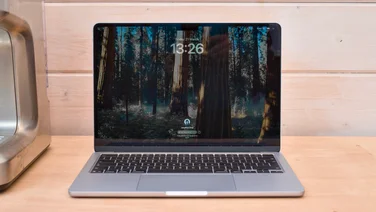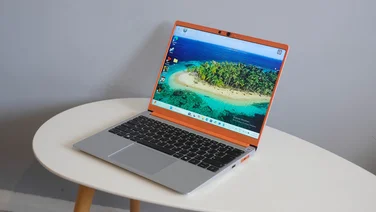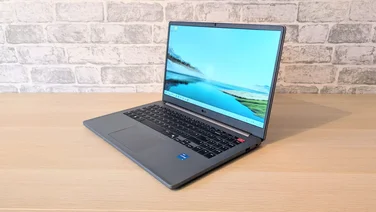To help us provide you with free impartial advice, we may earn a commission if you buy through links on our site. Learn more





By using an AMD processor instead of an Intel one, Samsung has managed to keep the price of its Series 5 Ultrathin to less than £500. Technically speaking, this isn’t an Ultrabook, as that’s an Intel brand-name, but you’d have a hard job working this out based on looks.

In fact, the Series 5 Ultrathin uses the same chassis as the Samsung Series 5 13in Ultrabook, so the only visible difference between the two is the AMD Vision sticker slapped onto the wrist rest. Even the ports around each edge are the same – you get one USB3, HDMI video out, a 3.5mm headset audio jack and a full-size Ethernet port on one side, and two regular USB ports and a multi-format card reader on the other.

Inside is a different story: with a Trinity A6-4455M processor at its core – alongside 6GB of RAM. The dual-core chip usually runs at 2.1GHz, but can use Turbo Core to boost up to 2.6GHz in certain applications. It’s easily fast enough for your everyday tasks, although it still struggled with our multi-threaded application benchmarks. An overall score of 21 puts it significantly far behind Intel’s Ultrabooks in terms of raw performance.
It uses a 500GB hard disk with a flash memory cache to speed up performance. This isn’t the SSD used on more-expensive Ultrabooks, but its the same technology used on the more affordable Intel-based models -such as this laptop’s Series 5 sister device.
Battery life is also a little behind the likes of Intel. In our light-use test, the Series 5 Ultrathin lasted five and a half hours away from the mains, which is enough to get most of the way through a working day, but a good two hours behind most Ultrabooks.

Trinity provides graphics power as well as desktop performance. The Radeon HD 7500G shares 512MB of video memory with the main system RAM, and should be able to play older games at reasonable detail settings. At our standard 720p settings with 4x anti-aliasing, it produced 20fps – a few frames faster than Intel’s Ivy Bridge integrated graphics, but still not fast enough to play newer games smoothly without seriously dropping the detail settings.
The 13.3in display has a fairly standard 1,366×768 resolution, but the matt finish is a nice addition – it helps diffuse light reflections, making it easier to view the screen in direct sunlight or under bright overhead lighting. The backlight is a very bright 300nit, which again makes it easier to use during the day. Unfortunately viewing angles aren’t particularly impressive, although there’s a reasonable amount of screen tilt to make up for it.
Considering how thin the main body of the laptop is, Samsung has done well to squeeze in a keyboard that has enough key travel to make typing comfortable. Each full-size, Chiclet-style key is bouncy and responsive, with a straightforward layout that won’t see you searching for keys or mistyping words. Naturally there’s no room for a numeric keypad and the keys aren’t backlit, so you may struggle to work in dim lighting, but it’s otherwise difficult to pick faults in it.

The oversized touchpad is a good match to the widescreen display, as you can span the Windows desktop in a single swipe. It responds well to multi-touch gestures and has a smooth plastic finish that lets you glide across it with minimal friction. The physical touchpad buttons have very little tactile feedback, which can make it difficult to know whether you’ve pressed hard enough to register a click, but at least the short travel distance makes it unlikely.

Compared to Intel’s Core i5 CPUS, AMD Trinity is quite far behind in terms of raw performance, but unless you’re running processor-intensive applications you’re unlikely to notice the difference in everyday use. The main reason to consider a Trinity-powered laptop such as the Series 5 is price. It costs just £480 and is one of the cheapest ultra-portable machines you can currently buy, without dropping down to underpowered netbooks.






